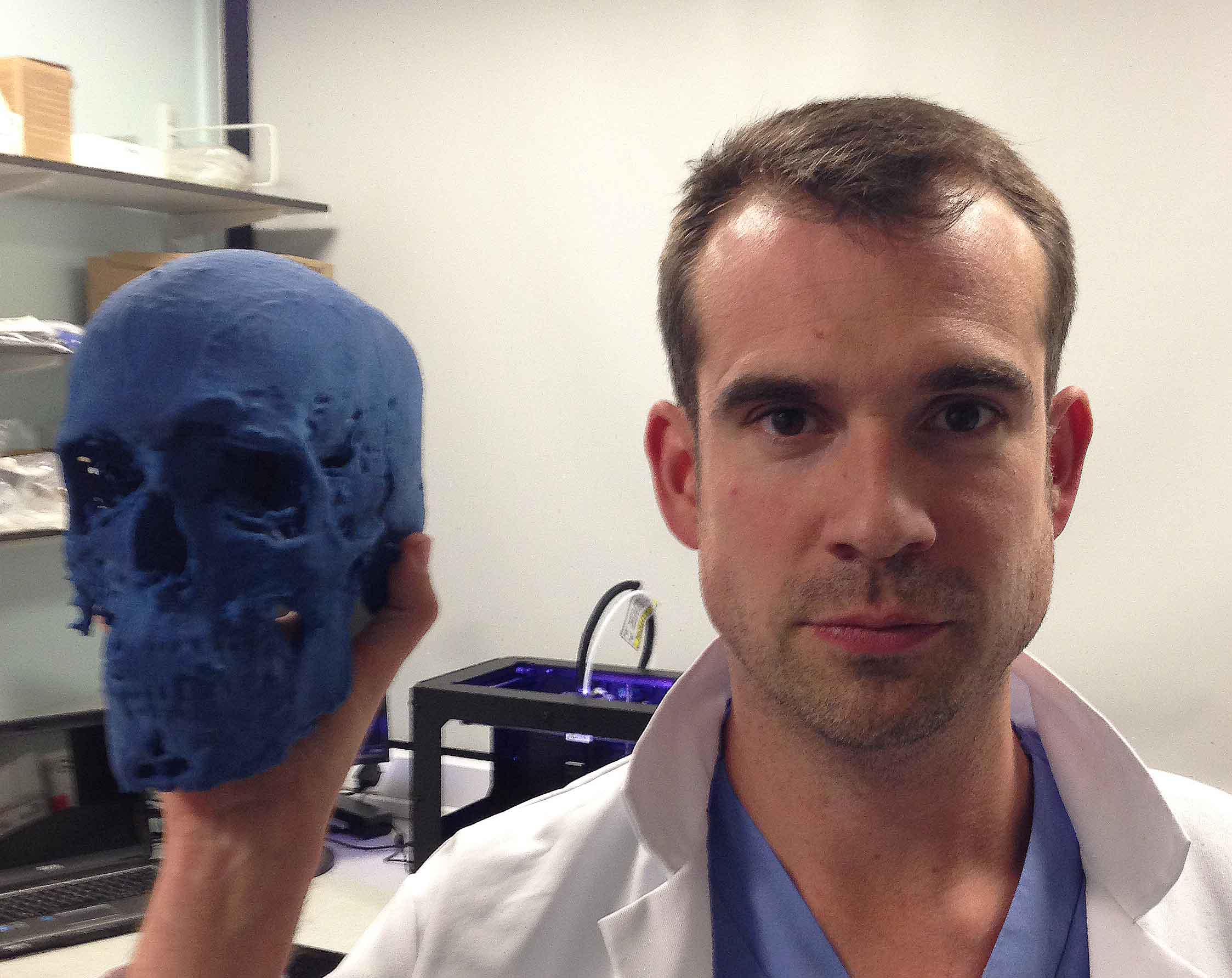
February 18, 2015, by Rob Ounsworth
BBC TV’s Operation Ouch explores 3D printing’s medical revolution
Not everybody gets to hold a copy of their skull and gaze deep into their own eye sockets.
TV presenter Dr Chris did just that – “it’s very, very, creepy, actually” – during a visit to the Centre for Biomolecular Sciences with Operation Ouch, BBC TV’s children’s show about the human body.
A model of Dr Chris’s skull was printed to illustrate how 3D technology could herald a new age of medicine.
An MRI scan of his head supplied the data for a 3D printer to replicate the skull’s hard tissue by printing and fusing layers of plasticised powder.
The School of Pharmacy’s Dr Glen Kirkham told Dr Chris how the University’s latest 3D printers can also print soft tissue using a gel that contains living cells.
Dr Glen, who is already a veteran of Channel 4’s Embarrassing Bodies (discussing tissue engineering, of course), showed Dr Chris how a “digital tweezers system” uses fingertip-control on tablets to grab and order individual cells.
That means cells can be printed in a particular sequence and combination – allowing 3D printing of living tissue and opening up the very real prospect of the technology being used to rebuild parts of the human body.
As Dr Chris told CBBC’s young viewers: “The possibilities of 3D printing are limitless and even during your lifetime if you damage a part of your body there’s the possibility we can simply print you another one.”
Dr Kirkham added: “The application of 3D technology to tissue repair has enormous potential. We are looking at some clinical applications for replacing tissues such as veins inside the next decade. Replacing whole organs is many years away and there are huge challenges ahead – but CBBC viewers could indeed see these incredible advances in their lifetime.”
Catch up on yesterday’s Operation Ouch in on the BBC iPlayer here
Previous Post
Sailing spidersNext Post
A big week for dementiaNo comments yet, fill out a comment to be the first

Leave a Reply